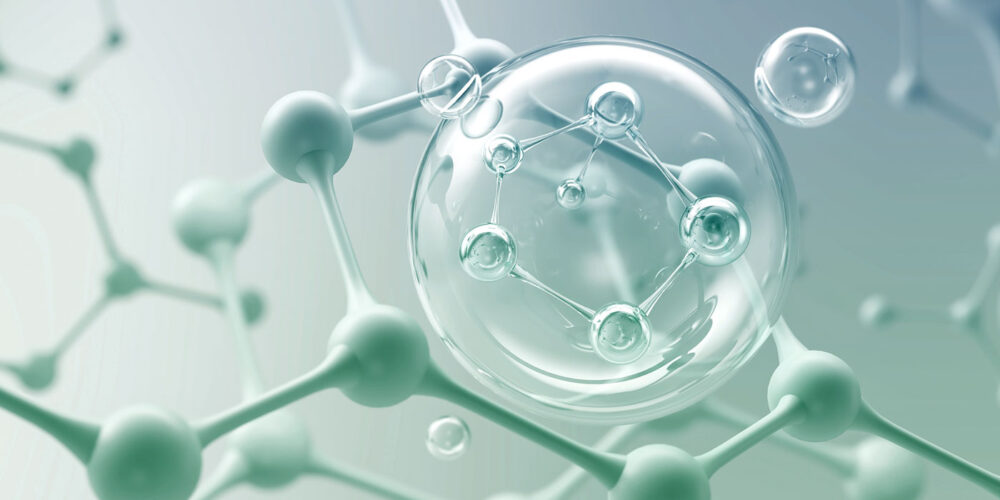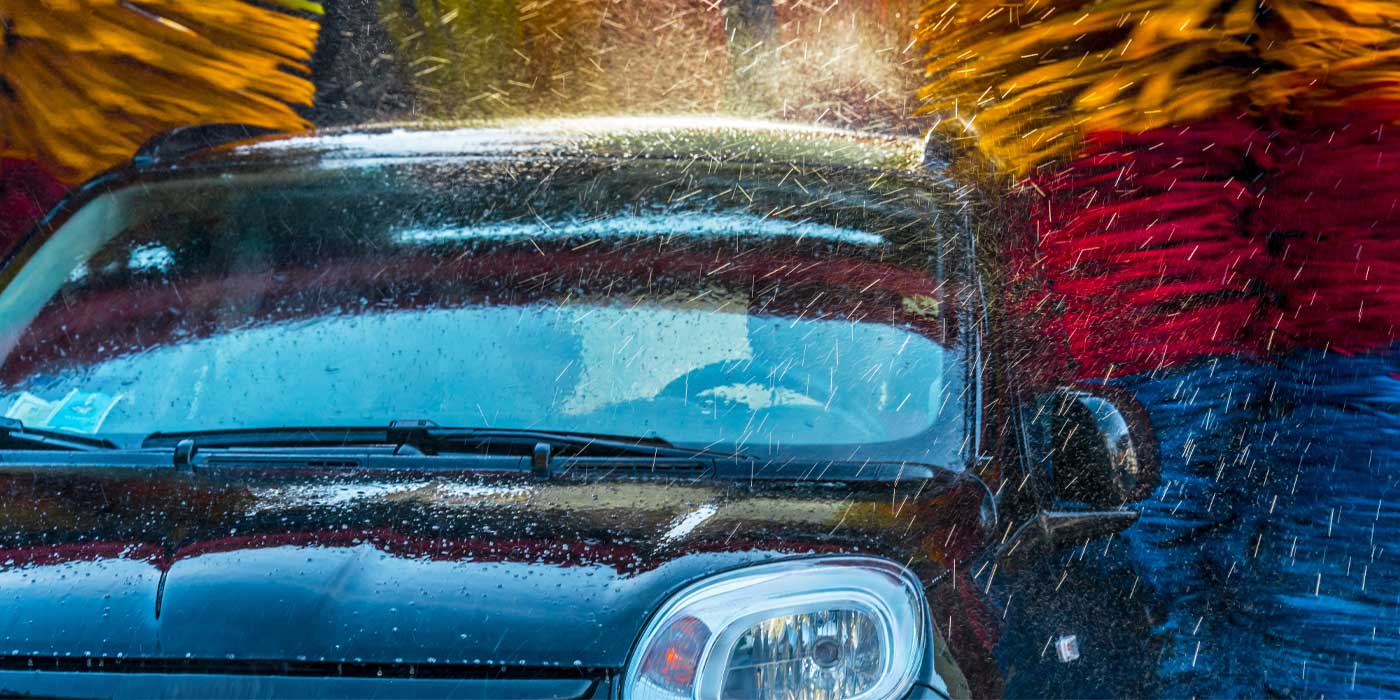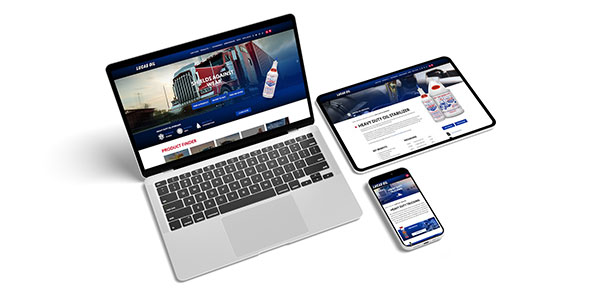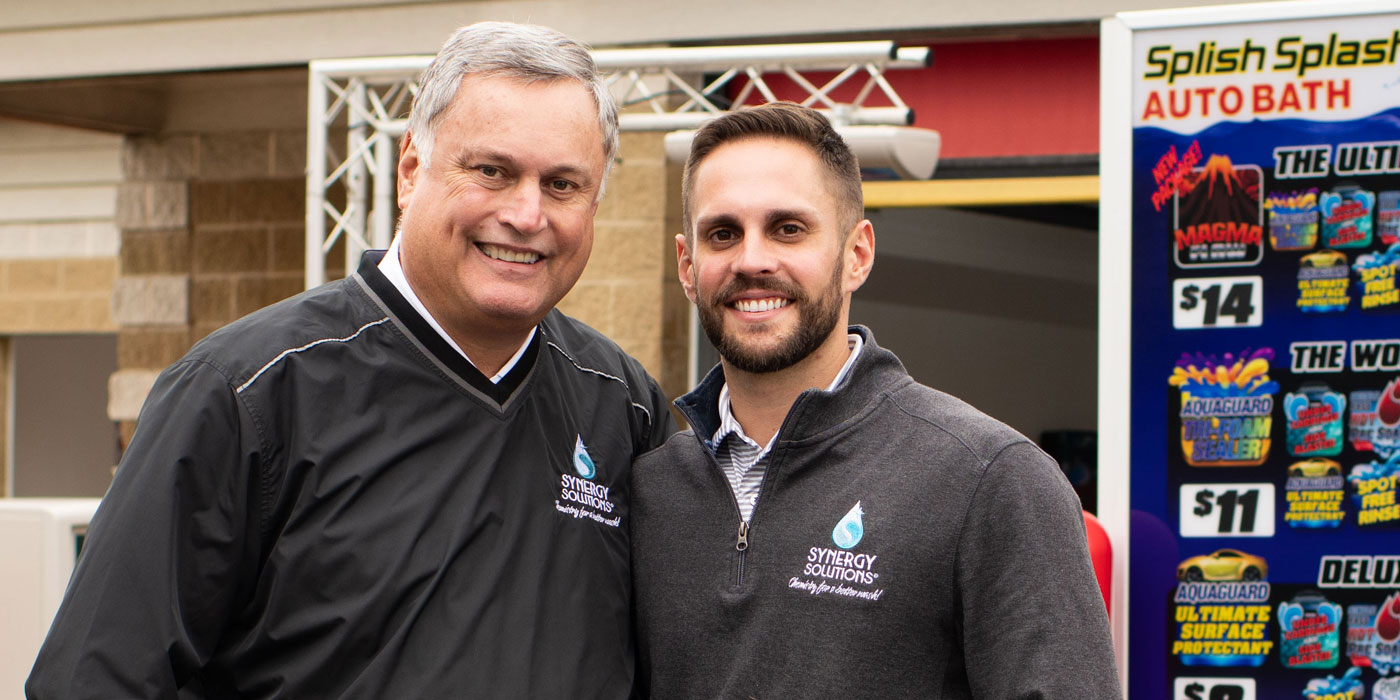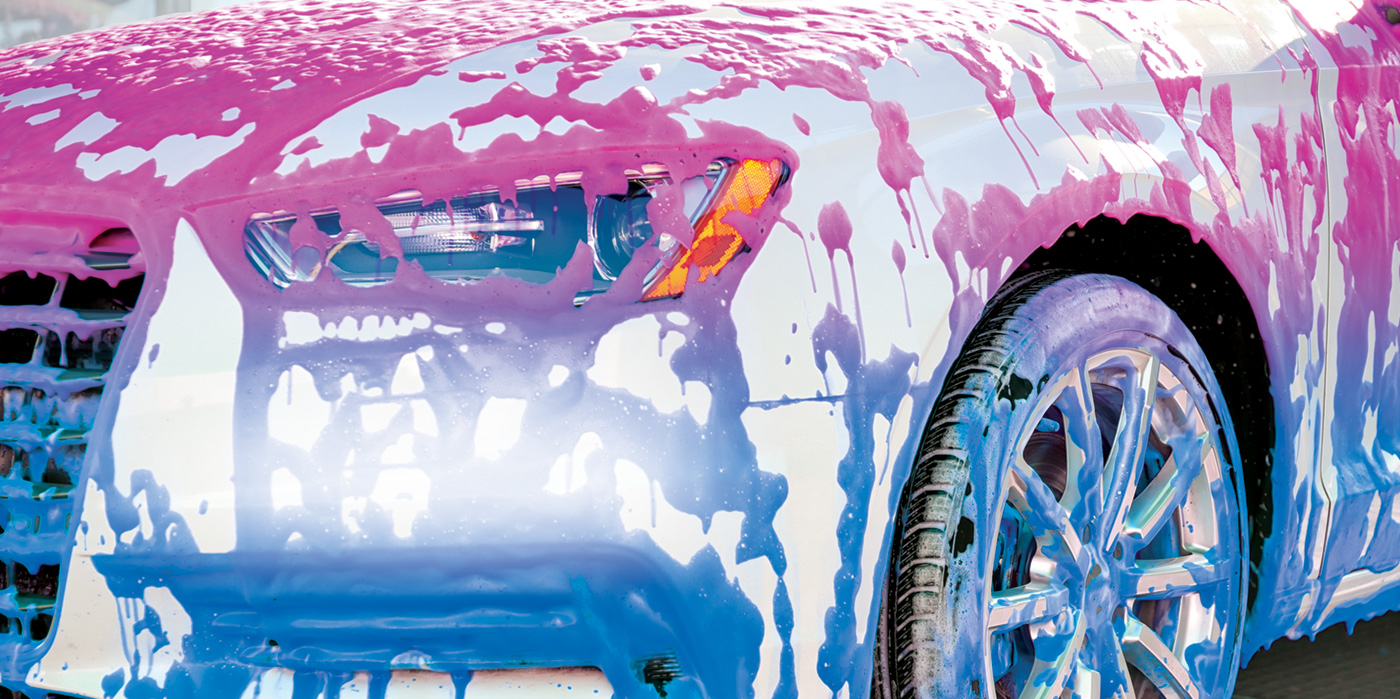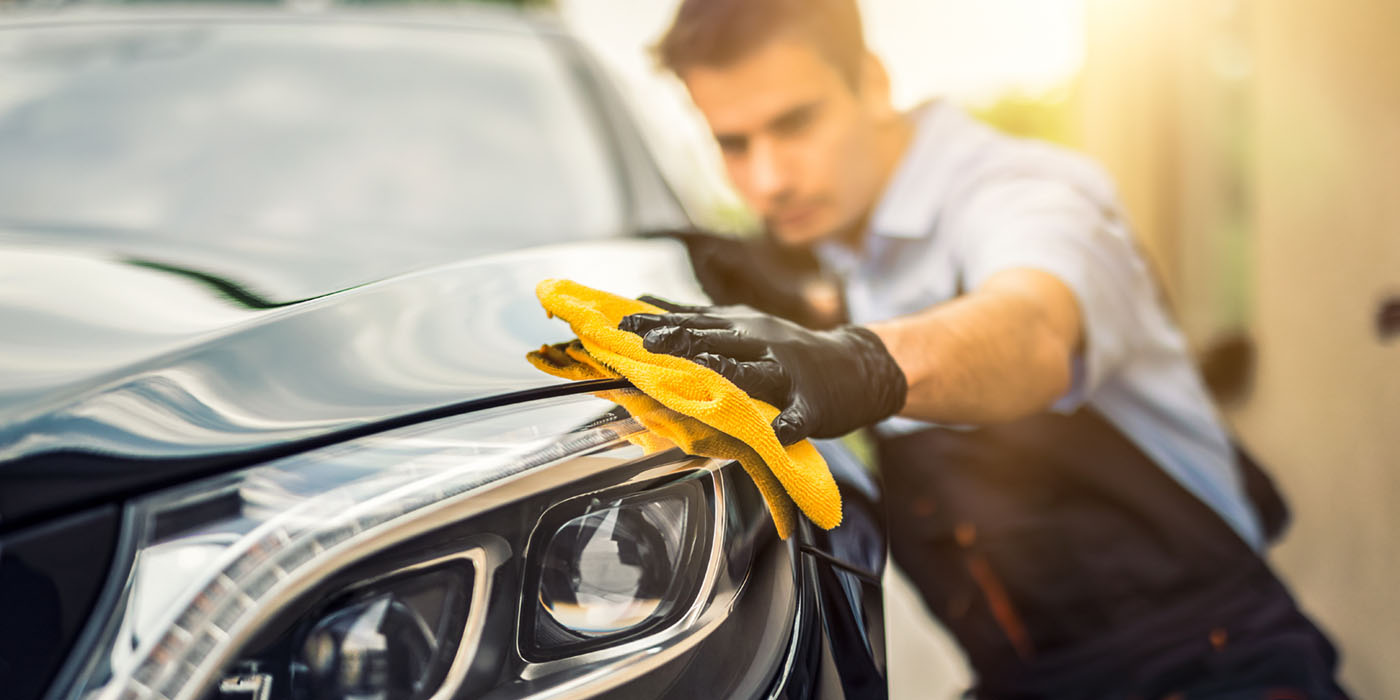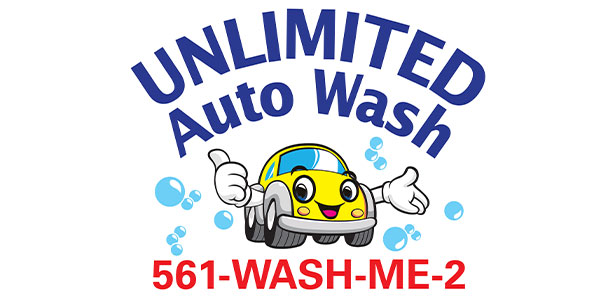Dwell time joins water quality, temperature, chemical reaction and mechanical action as one of the five factors of cleaning. As one of the main ingredients in what it takes to get a clean car, it deserves a little dissection.
What is dwell time? How is it different for tunnels and in-bay automatics? How has technology impacted it? What is the perfect dwell time?
Most people think of dwell time as simply the time an application must react with the vehicle’s surface. A lot of people look at their carwashes and see dwell time as 6 feet from one application to the other application, for example.
When speaking with Joseph Moldovan, managing director for Qual Chem, you may get a little bit of a different viewpoint. Moldovan is known for looking at things from a unique perspective. Twenty years ago, as a carwash operator, he became interested in expanding the choices of carwash chemicals in the market. Using his chemistry background, he designed a new way to formulate and blend chemicals to find the perfect custom fit for each of his locations.
According to Moldovan, dwell time is the time necessary for the product or chemical to emulsify the dirt to suspend it on the surface of the car. The chemicals react instantly upon application, so dwell time is the time it takes for that reaction to reach the surface of the car and suspend the dirt it is there to remove.
There are many factors that impact dwell time. Applying chemistry with higher pressure can lower the dwell time by penetrating the dirt easier. Since the chemicals react instantly, what needs to be understood is how much time is necessary for the liquid to penetrate the dirt on the surface of the car.
Other factors that can affect dwell time are temperature, friction and equipment layout. Some of the biggest variations we see are by wash type, whether you are looking at a tunnel wash or an in-bay automatic.
Tunnel vision
First, let’s look at tunnels. In a tunnel, generally, we start with an application of presoak first, then we typically have between 4 and 6 feet of distance between the next application or friction. Depending on the conveyor speed — one tunnel’s 4-foot span could equal another tunnel’s 2-foot span according to how fast the conveyor is moving — the faster the chain speed, the less dwell time you have per foot.
When you are working with a shorter dwell time, you must apply more liquid on the surface of the car. Many may think they should just go up in the concentration of the chemistry when the volume of liquid you are putting on the car could assist your dwell time even more than concentration. It isn’t just about increasing the concentration of chemicals used, it’s also about increasing the volume of liquid being put on the car to decrease your dwell time requirements.
Depending on the speed of the conveyor, the total dwell time is going to change and you’re going to need more liquid on a car to be able to achieve cleaning.
Dwell time in the bay
When it comes to dwell time, an in-bay automatic is almost ideal. When you have an arm or carriage, which goes around or over the car, and it takes let’s say 35 seconds, 45 seconds or a minute to get around the entire car, that gives you automatic dwell time. The chemistry stays on the surface of the car for 35 seconds, for example, before the next application or rinse
occurs.
Is there any other difference in an in-bay automatic when it comes to dwell time?
In an in-bay automatic, you penetrate the dirt with a lot more liquid going on a car than you apply in a tunnel. Also, why are they not as efficient as a tunnel? The answer is friction.
With the available chemistry, let’s say we can clean 95% of the side of the car. On the side of the car, you have the nozzles traveling very close to the surface of the car with the chemical application and with the high pressure application. Where do you have problems? The eyebrow on the windshield.
With some machines, the arm or carriage is too far from the top surface of the car. That’s the area which is the toughest to clean unless you have a unit that follows the contours of the vehicle. Everybody judges the cleaning of a touch-free in-bay automatic by how well you remove the eyebrow on the windshield. On the top, you know it’s going to be more difficult to clean, but going back to dwell time, the touch-free in-bay automatic provides the best dwell time because of how chemistry is being applied. Sure, there’s a variable if you make the carriage go faster or slower, but it still offers the best dwell time.
Concentrating on market advancements
How has the advancement in chemistry affected dwell time? There’s no question that the better raw materials we have today allow the products to be more efficient. Beyond the quality of the raw materials improving, we also made improvements in formulations compared to the formulas used 25 years ago.
Using multiple effective raw materials will create a better application and faster acting chemical that doesn’t need as much dwell time as in the past. Over the years, we have been able to improve chemistry to have faster reaction times.
So, what about the increasingly popular super concentrates? Have they impacted dwell time? The short answer is no.
If you remember where we started, it’s not necessarily about concentration of the product on the vehicle’s surface more than it is about volume of the chemicals applied. The idea of a super-concentrated chemical is to be able to dilute them further and give you the opportunity to save on how much you’re shipping, storing and lifting. The super concentrates allow you to wash a higher number of vehicles from the same container size than was once possible.
If you are diluting the product to a standard pH or strength, it will give you the same dwell time as a normal chemical that is diluted in concentration to the same pH. What is important to remember with the super concentrates is that you still want to dilute to the same pH and strength of a normally concentrated product as to not be wasteful or destructive. Overall, super concentrates are built to give you savings in freight and storage, but not better dwell times.
The conversation about dwell times really exists when it comes to cleaning the car. It isn’t as much of a factor when it comes to lubrication and finishing products. For instance, wrap lubricant doesn’t need a dwell time. It needs to be placed on the surface of the car before the wrap material hits the surface of the car to help the material glide, reduce noise and grab, and make the wash experience more pleasant for your customers.
Drying agent is another example where you don’t have dwell time. With detergents, you must have dwell time for the detergent to work to react with the dirt on the surface of the car. However, when you’re talking about the difference from detergents to drying agents or any waxes, those chemicals are supposed to work instantly.
Dwell time in action
Is there a preferred dwell time for each application? Is there only one way to wash a car? We all know there’s an infinite number of ways to wash a car. From our company’s standpoint, so much of your cleaning success is based on your pH levels (concentration), application layout, water quality and, of course, dwell time.
With this being an article on dwell time, let’s go ahead and assume that your water quality is good and your pH levels for your different applications are in a reasonable range — around 12.5 for high pH applications and around 2.5 for low pH applications.
If the pH is right in a tunnel, the dwell time should be 4 to 6 feet between one application and the next, running a 140 to 160 cars per hour chain speed. Up next would be lubricants following your cleaning applications. You can have the same dwell time with cleaning applications until you apply a lubricant soap and the lubricant soaps don’t really need dwell time. After that you have the other products like triple foam. Triple foams are foaming detergents with color, a foaming wax or a combination of both.
Now many OEMs offer a ceramic or graphene type product line. Many times, these are multiple-step processes that live in different areas of the wash. With some chemical lines, you can choose how many steps you want to use. For instance, the first step is there to remove oxidation and needs to be placed in line with friction. Later in the wash are additional steps that can be applied similar to other finishing protectant products, none of which require dwell time. This process will result in an unmatched vehicle shine.
For drying agents and protectants, the two most important things in applying those products are to make sure the surface of the car has an acidic surface coming into the applications and to know how much water is on the surface of the vehicle.
How is the surface of the car coming into that area? Does it have a lot of water still on it? Is it reclaim water? Or RO reject water?
All of those factors will create some side effects for how the waxes and protectants work. The lower the pH is on the surface of the car, the better the drying agent and other protectants will work. If the vehicle surface is not breaking in the beginning when you are going into the extra services and drying agent, your chemicals will have to work harder to adhere to the surface of the car. But, with all of that being considered, these finishing products truly require no dwell time.
Dwell time is in a sense only vital when it comes to your cleaning products where you need to make sure you have the correct pH and volume of liquid hitting the car’s surface. Your applications that use air to create foam for lubricity are there to help the friction fabric glide over the surface of the car. Your finishing applications, such as drying agent and clear-coat protectant, react instantly with the surface of the car as more of a sealant. The dirt is already removed, and dwell time isn’t necessarily required.
Jessica Price Easter is director of marketing and Joseph Moldovan is managing director of Qual Chem. Jessica’s favorite role is bridging the divide between vendors and operators, finding mutually beneficial relationships, and building brands. Joseph entered the industry in 1983. As an operator, he experienced the pains of bad chemistry and decided to do something about it. He founded Qual Chem in 2004 with the guarantee to make the best formulations supported by unmatched service. If you want to talk more about carwashing or learn more about Qual Chem’s process and products, please feel free to reach out to either Joseph or Jessica at [email protected].

